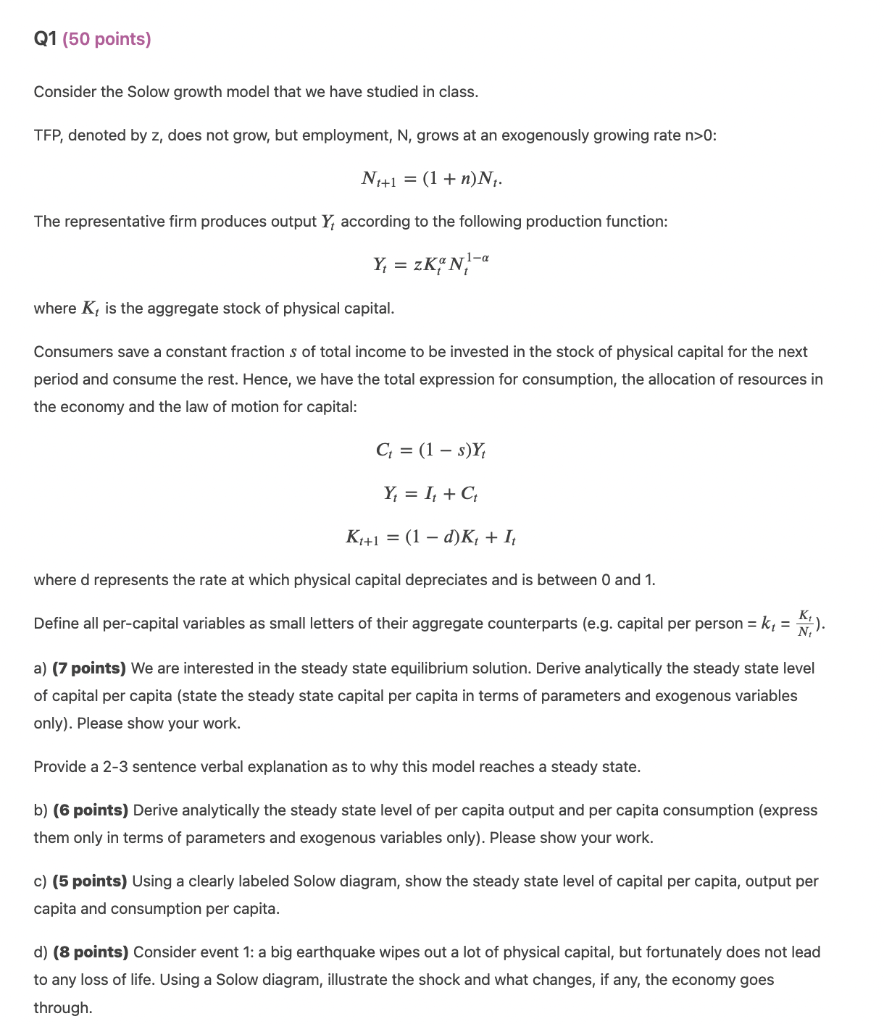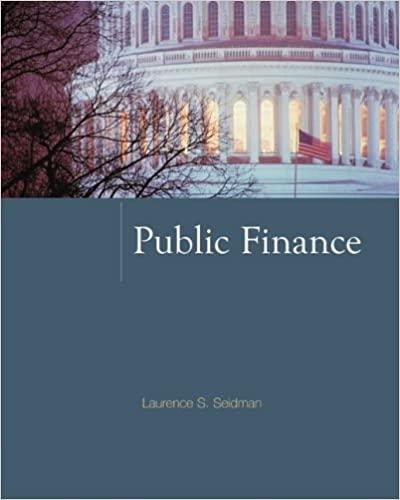
Consider the Solow growth model that we have studied in class. TFP, denoted by z, does not grow, but employment, N, grows at an exogenously growing rate n>0 : Nt+1=(1+n)Nt. The representative firm produces output Yt according to the following production function: Yt=zKtNt1 where Kt is the aggregate stock of physical capital. Consumers save a constant fraction s of total income to be invested in the stock of physical capital for the next period and consume the rest. Hence, we have the total expression for consumption, the allocation of resources in the economy and the law of motion for capital: Ct=(1s)YtYt=It+CtKt+1=(1d)Kt+It where d represents the rate at which physical capital depreciates and is between 0 and 1 . Define all per-capital variables as small letters of their aggregate counterparts (e.g. capital per person =kt=NtKt ). a) (7 points) We are interested in the steady state equilibrium solution. Derive analytically the steady state level of capital per capita (state the steady state capital per capita in terms of parameters and exogenous variables only). Please show your work. Provide a 2-3 sentence verbal explanation as to why this model reaches a steady state. b) (6 points) Derive analytically the steady state level of per capita output and per capita consumption (express them only in terms of parameters and exogenous variables only). Please show your work. c) (5 points) Using a clearly labeled Solow diagram, show the steady state level of capital per capita, output per capita and consumption per capita. d) (8 points) Consider event 1: a big earthquake wipes out a lot of physical capital, but fortunately does not lead to any loss of life. Using a Solow diagram, illustrate the shock and what changes, if any, the economy goes through. Consider the Solow growth model that we have studied in class. TFP, denoted by z, does not grow, but employment, N, grows at an exogenously growing rate n>0 : Nt+1=(1+n)Nt. The representative firm produces output Yt according to the following production function: Yt=zKtNt1 where Kt is the aggregate stock of physical capital. Consumers save a constant fraction s of total income to be invested in the stock of physical capital for the next period and consume the rest. Hence, we have the total expression for consumption, the allocation of resources in the economy and the law of motion for capital: Ct=(1s)YtYt=It+CtKt+1=(1d)Kt+It where d represents the rate at which physical capital depreciates and is between 0 and 1 . Define all per-capital variables as small letters of their aggregate counterparts (e.g. capital per person =kt=NtKt ). a) (7 points) We are interested in the steady state equilibrium solution. Derive analytically the steady state level of capital per capita (state the steady state capital per capita in terms of parameters and exogenous variables only). Please show your work. Provide a 2-3 sentence verbal explanation as to why this model reaches a steady state. b) (6 points) Derive analytically the steady state level of per capita output and per capita consumption (express them only in terms of parameters and exogenous variables only). Please show your work. c) (5 points) Using a clearly labeled Solow diagram, show the steady state level of capital per capita, output per capita and consumption per capita. d) (8 points) Consider event 1: a big earthquake wipes out a lot of physical capital, but fortunately does not lead to any loss of life. Using a Solow diagram, illustrate the shock and what changes, if any, the economy goes through







